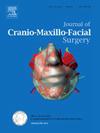颅脑外伤后颌面部骨折计算机辅助手术的准确性及临床评价。
IF 2.1
2区 医学
Q2 DENTISTRY, ORAL SURGERY & MEDICINE
引用次数: 0
摘要
颌面部骨折的治疗对外科医生来说是一个具有挑战性的问题。本临床研究旨在评估包括面部和头部复杂骨折在内的各种类型的治疗方法的准确性和临床结果。纳入的患者采用CAD/CAM技术进行治疗。通过将术前计划与术后CT数据叠加,进行基于体素的分析,以评估每位患者的术前/术后准确性。比较术前、虚拟计划和术后定制钢板螺钉孔位置之间的距离。此外,还评估了各种细节,如复位导板/钢板数量和手术通路、手术时间和围手术期并发症。纳入9例患者。通过将计划与术后CT结果叠加,以毫米为单位测量的中位精度为1.420(标准差0.425)。手术时间在100 ~ 620 min之间。3例出现并发症;其中包括术前1个复位指南断裂,2例患者术中定位钢板困难。综上所述,CAD/CAM技术在治疗各种颌面部骨折中都是有益的;然而,文献资料缺乏,需要更多的研究来证实这些结果。本文章由计算机程序翻译,如有差异,请以英文原文为准。
Accuracy and clinical evaluation of computer-aided surgery in management of maxillofacial fractures after trauma
Management of maxillofacial fractures is a challenging situation for surgeon. This clinical study aimed to evaluate management of various types, involving complex fractures in the face and head region, in terms of accuracy and clinical outcomes. Included patients were treated using CAD/CAM techniques. A voxel-based analysis was carried out to evaluate the pre-/postoperative accuracy for each patient by superimposing the preoperative planning with the data for the postoperative CT. The distances between the preoperative, virtually planned, and postoperative positions of the screw holes of custom plates were compared. Additionally, various specifics, such as number of reduction guides/plates and surgical accesses, operating times, and perioperative complications were evaluated. Nine patients were included. The median accuracy, measured in millimeters by superimposing the planning with postoperative CT results, was 1.420 (standard deviation 0.425). The surgical times ranged between 100 and 620 min. Complications were seen in three patients; these included preoperative breakage of one reduction guide, and difficulty in intraoperative positioning of the plates in two patients. In conclusion, CAD/CAM techniques in the treatment of a variety of maxillofacial fractures can be beneficial; however, there is a lack of information in the literature, and more studies are needed to confirm these results.
求助全文
通过发布文献求助,成功后即可免费获取论文全文。
去求助
来源期刊
CiteScore
5.20
自引率
22.60%
发文量
117
审稿时长
70 days
期刊介绍:
The Journal of Cranio-Maxillofacial Surgery publishes articles covering all aspects of surgery of the head, face and jaw. Specific topics covered recently have included:
• Distraction osteogenesis
• Synthetic bone substitutes
• Fibroblast growth factors
• Fetal wound healing
• Skull base surgery
• Computer-assisted surgery
• Vascularized bone grafts

 求助内容:
求助内容: 应助结果提醒方式:
应助结果提醒方式:


